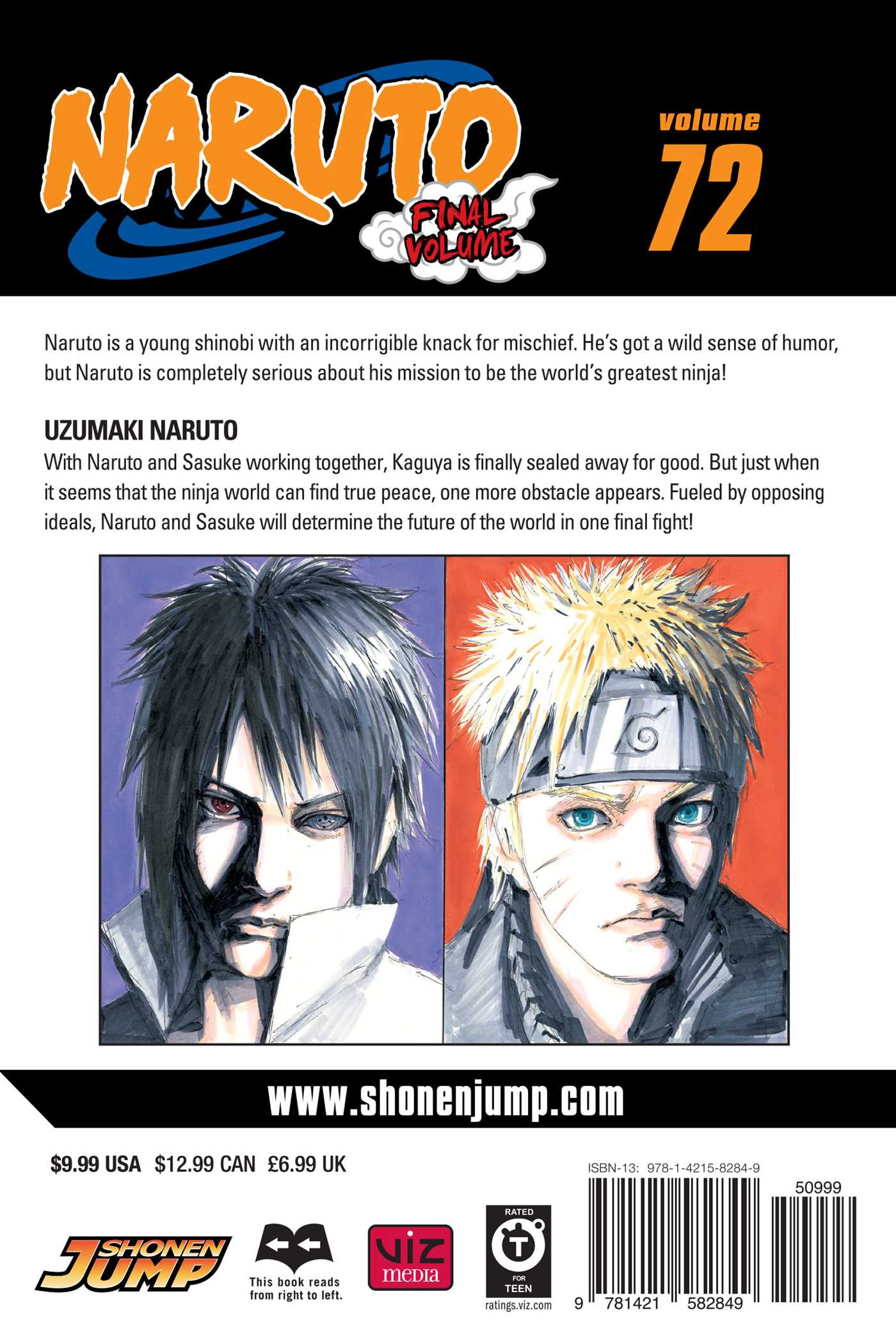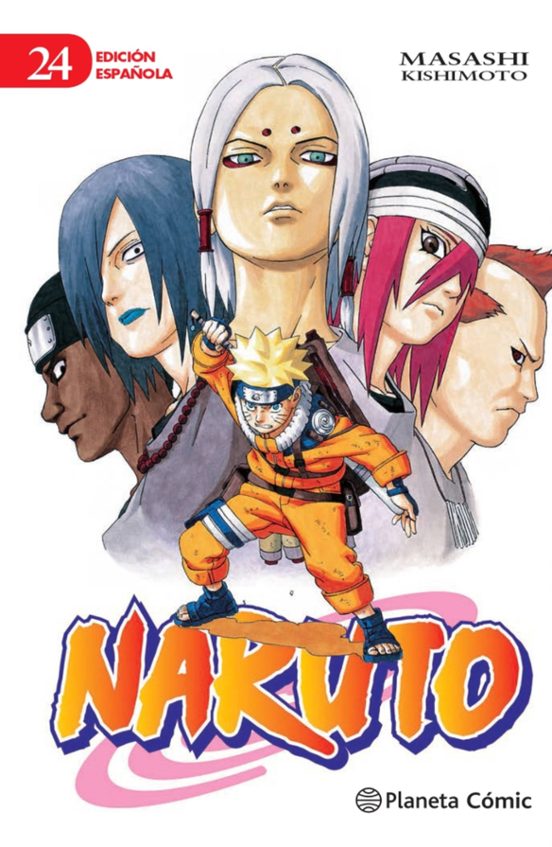


What I really wanted more of was the very last chapter, ten years later, and giving us a LOT MORE. The message was friendship, and no matter how many times the theme has been pounded into my thick skull over the length of the manga, it still resonates because it's true. Most of the volume was taken up between a good and solid resolution between Naruto and Sasuke, with the final fight that had been so damn necessary from the beginning of the manga and brought to such a howling crescendo.

It's hard to be anything but speechless after going through all that. So farewell Naruto, it's been a wild ride. If Kishimoto ever decides to make another full series on the world of Naruto then I'll absolutely read it. I watched Naruto grow from a goofy kid with pervy jutsu to the savior of the shinobi world and I loved every bit of it. I loved the techniques like Sage Mode, Tailed Beast Mode, and the Eight Gates. I loved it the teams, Konoha, the jutsu I still would've love to see someone call out the wrong jutsu on purpose to surprise the enemy, and the world from the start. I've read Naruto from the beginning, the start of Team 7, the fight with Zabuza and Haku, the Chunnin Exams, and the multitude of other amazing moments. So instead I wrote a review for book one and now I'm writing a review/ode to the series for book 72. I love the series, I love the character, and I've loved the video games (I played and owned many of them over the years.) I never wrote reviews for the majority of the series and the idea of writing 72 reviews seems daunting. In 1999, a serialized version of Naruto began publication in Weekly Shōnen Jump and quickly became a hit. In 1998, Kishimoto premiered as a Weekly Shōnen Jump artist with a serialized version of Karakuri in Weekly Shōnen Jump, but it proved unpopular and was canceled soon after. This was followed in 1997 by a pilot version of Naruto (NARUTO-ナルト-), published in Akamaru Jump Summer.

This earned him the Weekly Shōnen Jump's monthly "Hop Step Award" in 1996, granted to promising new manga artists. Kishimoto's first work as a manga artist was Karakuri (カラクリ?), which he submitted to Shueisha in 1995. Two of his former assistants, Osamu Kajisa (Tattoo Hearts) and Yuuichi Itakura (Hand's), have also gone on to moderate success following their work on Naruto. His younger twin brother, Seishi Kishimoto, is also a manga artist and creator of the manga series O-Parts Hunter (666 Satan) and Blazer Drive. Masashi Kishimoto (岸本 斉史 Kishimoto Masashi) is a Japanese manga artist, well known for creating the manga series Naruto.


 0 kommentar(er)
0 kommentar(er)
